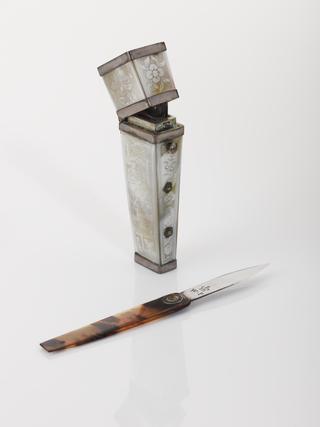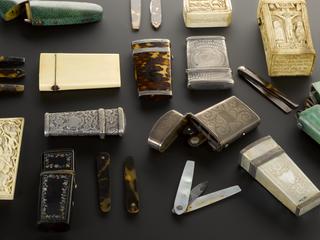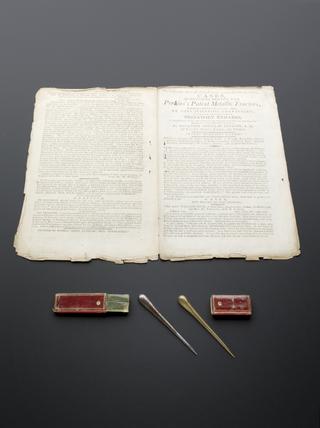
Copy of a blood-grouping tile
- PART OF:
- Blood packs
- Made:
- 1970-1981 in Staffordshire


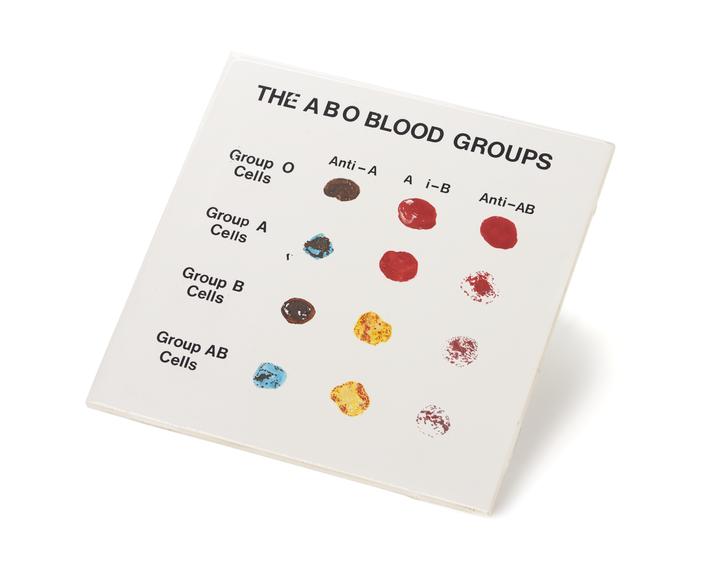
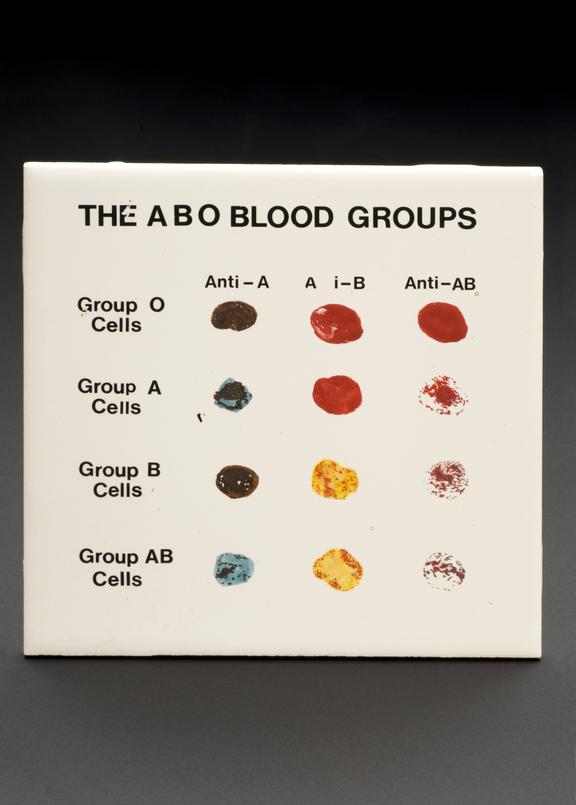
Copy of blood-grouping tile, porcelain, made by H. and R.Johnson Ltd., English, 1970-1981
The discovery of the different human blood types – A, B, O, AB – made successful blood transfusions possible. Each blood type has specific antigens, which stimulate the response of antibodies to fight infection. When a person receives blood it must be of the same type as their own otherwise the antigens will be destroyed (haemolysed.) Tiles like this one were used in hospital laboratories to determine blood groups. Today the process is done by machine.
Karl Landsteiner (1868-1943), an Austrian-American pathologist, discovered blood groups in 1902. However, blood transfusions were not common practice until after the Second World War.
Details
- Category:
- Therapeutics
- Object Number:
- 1981-476 Pt1
- Measurements:
-
overall: 5 mm x 153 mm x 153 mm,
overall - previous (length 153 mm; width 153 mm; thickness 6 mm): 153 mm x 153 mm x 6 mm,
- type:
- blood-grouping tile
- credit:
- Davies, T.D.L.


